Attraction Wolfe Creek Crater National Park
Tourism Western Australia acknowledges Aboriginal peoples as the traditional custodians of Western Australia and pay our respects to Elders past and present. We celebrate the diversity of Aboriginal West Australians and honour their continuing connection to Country, culture and community. We recognise and appreciate the invaluable contributions made by First Nations peoples across many generations in shaping Western Australia as a premier destination.
Your browser is not supported for this experience. We recommend using Chrome, Firefox, Edge, or Safari.
- Tourism Industry
- Media & Film
- Privacy Statement

Plan Your Holiday To Australia’s North West
Wolfe creek crater national park.
Wolfe Creek Crater Road, Halls Creek, 6770
154km South from Halls Creek
One of Australia's most remarkable outback landscapes, the massive Wolfe Creek Crater National Park lies on the edge of the Great Sandy Desert in the Kimberley.
Wolfe creek crater is the second-largest crater in the world from which fragments of a meteorite have been collected, measuring 880m across and to a depth of about 60m..
Sightseeing, walking, photography and nature observation are the most popular activities. Viewing the crater rim is a must - it's a 200 metre return walk to the top of the crater rim, involving a steep rocky climb. Climbing down into the crater is not permitted because the steep terrain and loose rocks make it dangerous.
This is the second largest meteorite crater on Earth. The ridge of the crater stands about 35 metres above the surrounding flat sand plain. The outer edges slope at a gradual 15 degrees, but the much steeper inner walls fall away at about a 50 degree angle. The crater is known as Janyil in Jaru and as Karntimarlarl in Walmajarri. Traditional Owners believe this circular crater was formed when a giant mythological snake raised its head from the ground back long ago at the time of creation. Aboriginal people understand many natural features, such as rivers and creeks, are the tracks left by giant ancestral snakes that once weaved their way across the desert. Scientists believe Wolfe Creek was formed by the impact of a meteorite as long as 300,000 years ago. Geologists F Reeves and D Hart were the first non-Aboriginal people to come across this striking natural feature while conducting an aerial survey of the Canning Basin in 1947. In 1969 Wolfe Creek Crater was gazetted as a C class reserve. In 1976 protection of the area was upgraded to the status of Class A Reserve. The Crater is located south of Halls Creek along the Tanami Road in flat and arid country. The Wolfe Creek Crater access road travels through Carranya Station and is unsealed corrugated road through Carranya Station.
Tours to Wolfe Creek Crater National Park
Visit Wolfe Creek Crater on an extended 4WD Kimberley tour with Kimberley Safari Tours . The 16 day Adventurer includes time spent at the crater alongside other Kimberley icons.
Scenic flights over the crater can be booked in Halls Creek with Northwest Regional Airlines.
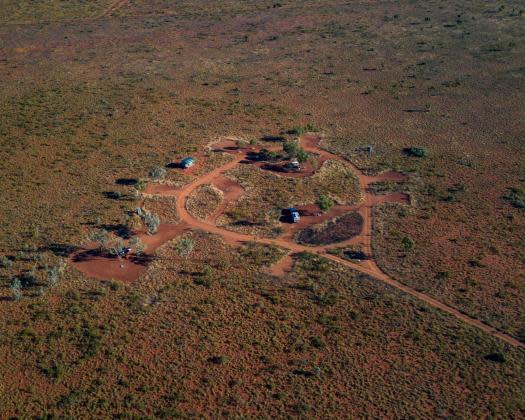
Access: The turnoff to the Wolfe Creek Crater National Park is situated approximately 154 kilometres south of Halls Creek along the Tanami Road. From the turnoff, it is approximately 23 kilometres to the carpark. When travelling to Wolfe Creek be prepared for unsealed roads and always close access gates when travelling on the access road. It is always recommended to travel in a 4WD vehicle due to the corrugations. Contact Halls Creek Travel & Tourism for up to date road conditions before travelling. Facilities: There is a DPAW campsite with basic toilets, however you need to be totally self-sufficient for all your supplies. Please note there is no water available.
Website: https://exploreparks.dbca.wa.gov.au/park/wolfe-creek-crater-national-park
Canning Stock Route
The Canning Stock Route is a must-do for experienced Australian adventurers. It’s the longest…
Caroline Pool
Caroline Pool is a picturesque natural waterhole amidst a tranquil setting which is great for a…
The China Wall is a natural white stone wall which looks like a miniature 'Great Wall of…
Duncan Road
This 429 kilometre unsealed track leads you through some of the most scenic landscapes in the…
Old Halls Creek
The old townsite of Halls Creek is located on the Duncan Road, just 15km from today's townsite…
Palm Springs
Palm Springs is an outback oasis of palm trees and abundant wildlife surrounding a permanent…
Paruku (Lake Gregory)
The spectacular wetlands of Paruku lie on the northern edge of the Tanami and Great Sandy deserts.
Russian Jack & Jack Jugarie Memorial Statues
The Russian Jack Memorial is a popular tourist attraction in Halls Creek, which captivates visitors…
Sawpit Gorge
Ideal for swimming amidst the lovely natural surrounds, float in the peaceful waters enjoying the…
Tanami Road
The shortest route from Halls Creek to Alice Springs is via the Tanami Road 4WD track. It takes two…

Wolfe Creek Crater National Park
Contact details, cost and booking.
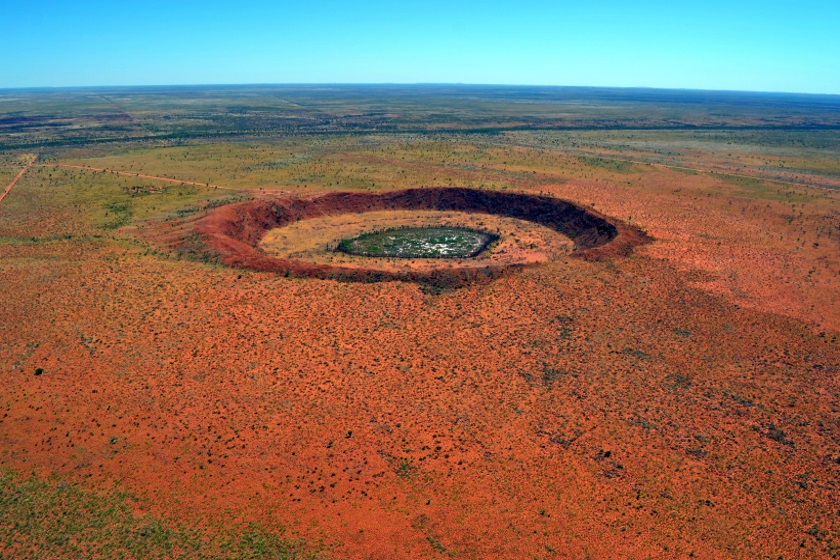
Five Australian meteorite craters you can actually visit
Article from RV Daily More than just big holes in the ground, Australia’s meteorite impact craters are the visually stunning remnants of our continent’s violent past. We tell you why you should go and visit …

Article from RV Daily
More than just big holes in the ground, Australia’s meteorite impact craters are the visually stunning remnants of our continent’s violent past. We tell you why you should go and visit them.
Throughout its 4.5 billion year history, Earth has experienced countless meteoric impacts but thanks to the volatile nature of the surface, the evidence of these impacts has largely been eroded away. Fortunately, a few remain visible on the surface and a handful of them are located across Australia. Here we identify five impact craters that you can visit on your travels around the country, but be warned, they are in some very remote locations.
Wolfe Creek
This would arguably be the most widely known impact crater in Australia after being made famous (perhaps infamous) by the movie of the same name. Unfortunately, the frightening film has resulted in many travellers avoiding the area for fear of being abducted by a deranged psychopath. It’s a pity, as those who don’t visit this place are missing out on experiencing something quite spectacular. Located about 150km south of Halls Creek on the Tanami Road, the Wolfe Creek crater is 870 metres in diameter and very well defined with an outer rim 60 metres in height. Both the rim and the crater basin are accessible by reasonably easy walking tracks. The nearby campground is excellent given its remote desert location. It’s free to use and toilets are available. Be mindful that access is via dirt roads so conditions can vary and, at times, a 4WD may be required. For more information click here .
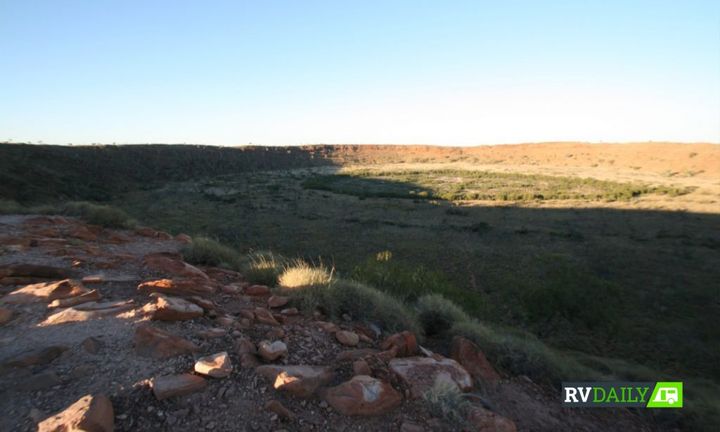
Standing on the edge of the Wolfe Creek crater
Henbury Impact Site
Located about 5km off the Stuart Highway on the Ernest Giles Road, about 145km south-west of Alice Springs, the Henbury impact site is unique in that it contains around 13 craters in very close proximity to each other. Formed around four thousand years ago when a large meteorite broke up into several fragments during its descent to Earth. The relatively recent (in cosmological terms) nature of the impact means it was likely observed by the local Aboriginal population. The result is an almost alien landscape like no other. The craters range in size from seven metres to 180 metres with depths up to 15 metres. The circular shape of many of the craters is clearly visible from the rims. The conservation park has a small campground nearby which costs a modest fee of $3.30 per person per night or $7.70 for a family. Ernest Giles Road is generally a good dirt road, however, there can be some corrugations, so take care if you’re towing a caravan. For more information click here .
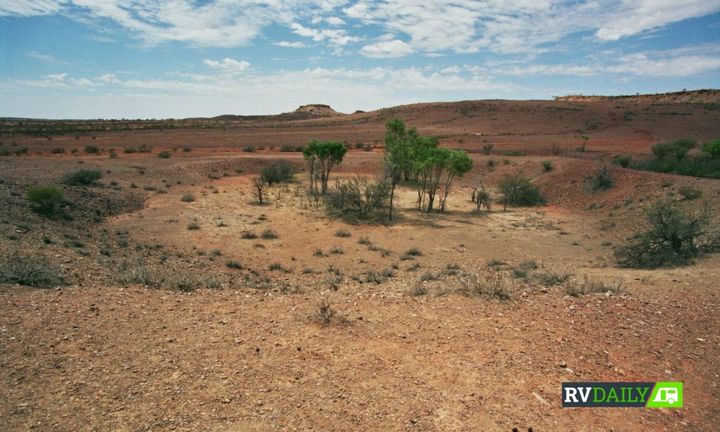
One of the larger craters at Henbury
Gosses Bluff
The result of a colossal impact with a comet 600 metres wide that occurred approximately 142 million years ago, Gosses Bluff is a massive meteor crater located 175km west of Alice Springs. The visible remnant is 5km in diameter and the rim rises 180 metres above the ground. It’s huge by any standard and, when viewed from a distance, looms on the landscape like an out-of-place mountain range. Access to the crater is via a 10km dirt track off Larapinta Drive. There are no camping facilities at the reserve and, while it’s open all year round, it pays to check to see if bad weather has closed the reserve by contacting the Ormiston Gorge Ranger Station on 08 8956 7799. Walking on the crater rim is not permitted, however, there are several walking tracks as well as picnic facilities provided in the reserve. For more information, click here .
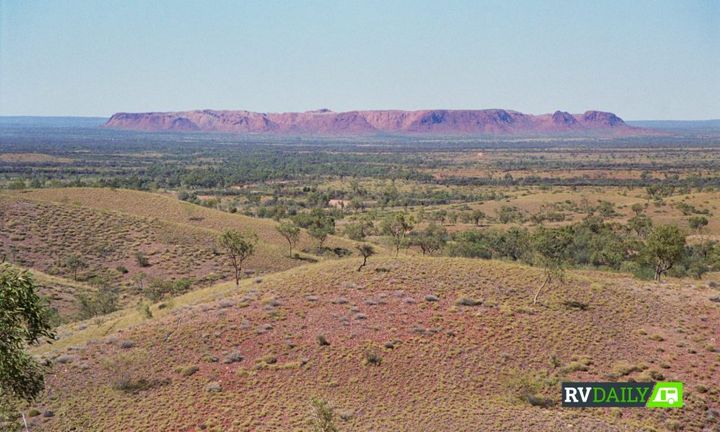
View of Gosses Bluff from Namatjira Drive
Boxhole Crater
Getting to Boxhole crater can be a bit of a challenge, not because it is difficult to access, rather, it is something of a local secret. It’s not widely advertised nor is it well signposted. Travel north from Alice Springs along the Stuart Highway and turn right onto the Plenty Highway. Drive for another 166km and turn left onto the Binns 4WD Track and drive for a further 39km. That should put you in the general vicinity of the crater. At 170 metres in diameter, it’s not a big crater but it was created in cosmologically recent times so it is reasonably well defined. There are no camping facilities in the immediate area however, there are excellent facilities at Hale River Homestead, including hot showers at Old Ambalindum.
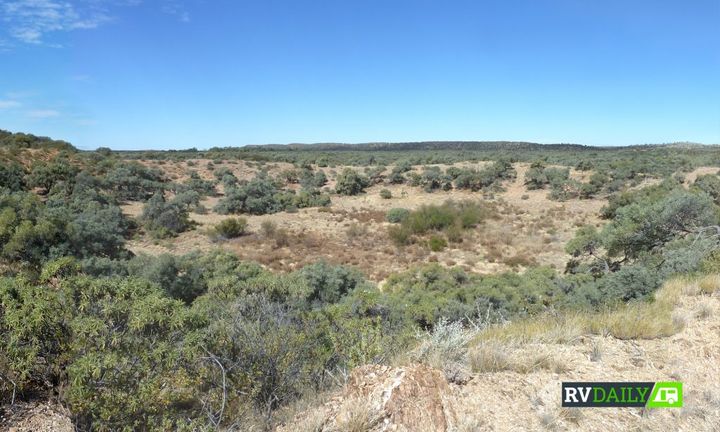
Boxhole Crater is something of a local secret
Veevers Crater
This one is for the truly adventurous travellers among us as it is extremely remote and it can be very difficult to get to. Veevers Crater is located in the middle of the vast Western Australian plains between the Great Sandy Desert and the Gibson Desert. The town of Kintore, 410km away, is the nearest populated centre. Access to Veevers is via the Gary Highway, 260km of dirt roads running off the Gunbarrel Highway. This is strictly 4WD territory. Before you decide to go there, you should know Veevers is the smallest of the craters mentioned here at just 75 metres in diameter and the rim raises just 1.5 metres above the ground. That said, it is regarded as one of the best-preserved small craters on Earth with an almost perfect bowl shape topology and a central basin that sinks seven metres below the crest of the rim. Visually, it’s quite spectacular.
Now if you never get a chance to visit any of these fascinating craters, don’t worry as there is one last crater that you will more than likely visit as you travel through this vast country of ours. Located at the approximate midpoint between Uluru and Mount Conner is the centre of what is speculated to be the largest impact crater on Earth. This crater, called the Massive Australian Precambrian/Cambrian Impact Structure, is estimated to be approximately 600km in diameter. The outermost stress field ring could be as big as 2000km in diameter. While it’s yet to be officially confirmed as meteor impact site, it’s worth considering the next time you’re travelling through the central parts of the country that you might be driving through the remnant of a cosmic event of unimaginable proportions.
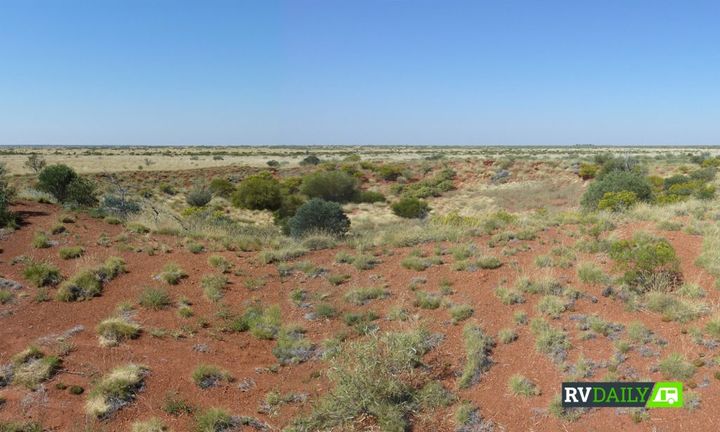
Getting to Veevers Crater can be a real challenge
Tips for remote-area travel
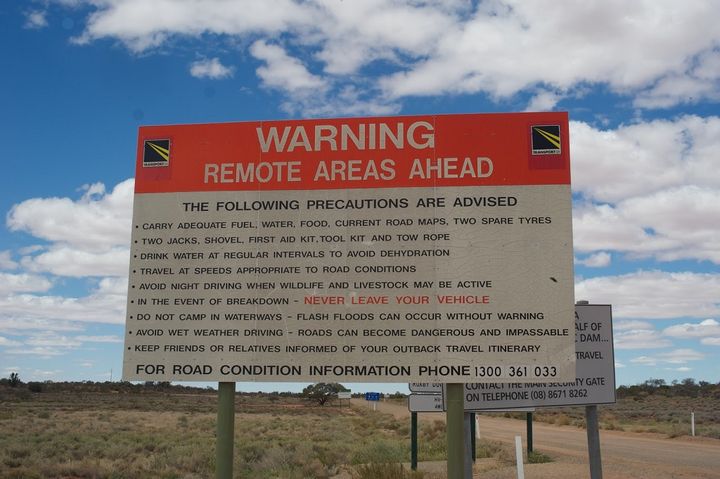
Do not ignore this sign when travelling the outback
If you are considering travelling to any of these locations, you must:
- Have a well prepared and maintained vehicle that has been modified or purpose-built for remote-area travel. 4WDs with high ground clearance are strongly recommended.
- Carry sufficient water and food with reserves in case of a breakdown.
- Drink water at regular intervals to maintainyour hydration.
- Carry sufficient fuel for the return journey with reserves. Driving on dirt or sand will dramatically increase your vehicle’s fuel consumption.
- Carry sufficient spare parts for your vehicle. Tyre repair kit, filters, fan belts, fuses, radiator hoses, wire ties, gaffer tape, hose clamps, jumper leads, dual batteries, etc.
- Carry a comprehensive first aid kit suitable for remote-area travel.
- Carry suitable vehicle recovery equipment at all times. Snatch strap, chains, shackles, shovel, two jacks and a comprehensive tool kit.
- Always ensure someone is aware of your travel intentions. Family, local police, etc. Make them aware of your itinerary.
- Always carry some form of emergency communications. Satellite phone or EPIRB are strongly recommended. HF radio may also be sufficient. UHF radios are not suitable forlong-distance communications.
- In the event of a breakdown or other emergency event, NEVER LEAVE YOUR VEHICLE.
- Travel at speeds appropriate to the conditions.
- Avoid driving at night or in wet weather.
- Do not camp in waterways as flash flooding can occur without warning.
- Do not rely on GPS mapping. Carry sufficient, up-to-date paper maps of the area you intend to travel.
Wolfe Creek Crater National Park

Most Recent: Reviews ordered by most recent publish date in descending order.
Detailed Reviews: Reviews ordered by recency and descriptiveness of user-identified themes such as waiting time, length of visit, general tips, and location information.
Also popular with travellers

Wolfe Creek Crater National Park - All You MUST Know Before You Go (2024)
Honest tourism information about Australia
Wolfe Creek Crater: Location, getting there, size & entry fee
- David Whitley
- National Parks

The Wolfe Creek Crater in the Western Australian outback is 875 metres in diameter. The second largest meteorite crater on earth is hard to get to, however.
The Wolfe Creek Crater is the second largest meteorite crater on earth. You’ll probably have to go a fair distance out of your way to see it, though – this impact crater is a long way from anywhere in the Western Australian outback.
Where is the Wolfe Creek Crater?
The Wolfe Creek Crater is in Wolfe Creek Crater National Park, Western Australia. The nearest settlement of any reasonable size is Halls Creek in the Kimberley region.
The drive from Halls Creek to Wolfe Creek is 145km long, and takes two to three hours depend on what sort of condition the Tanami Road is in. Do not even attempt to drive down it in a conventional vehicle outside of the dry season – it is 4WD only during the wet.
How big is the Wolfe Creek Crater?
The Wolfe Creek Crater is the result of a major meteorite crashing into Earth approximately 300,000 years ago. Aboriginal Australians had known of its existence, and woven it into their creation stories for a long time, but European settlers only discovered this Western Australian meteorite crater in 1947.
The Wolfe Creek Crater has an average diameter of 875 metres, and a depth of 60 metres. It makes a very obviously visible dent in the outback landscape.
Can I go inside the Wolfe Creek Crater?
Visitors are not permitted to go inside the Wolfe Creek Crater. The rim walls are too steep, and there are lots of loose rocks. Given the remote location, the Western Australia Parks and Wildlife Department has justifiably decided that going inside the crater is too dangerous.
However, you can take a 400 metre walk up to the top of the rim. Again, this is steep – don’t go expecting a relaxing stroll.
There is no entry fee for the Wolfe Creek Crater, but be aware that there are no bins on site. You need to take your own rubbish out with you. There is also no water in Wolfe Creek National Park – you need to bring your own drinking supplies.
For further information, visit the Parks and Wildlife Service website .

More Western Australia travel
How long is the drive from Onslow to Karratha ?
Swim at Hamersley Gorge , Fortescue Falls and Fern Pool in the Karijini National Park.
What is the Melbourne to Exmouth flight time ?
Geraldton road trips .
How long is the drive from Perth to Norseman ?

- Foodie Trails
Five Australian meteorite craters you can actually visit

More than just big holes in the ground, Australia’s meteorite impact craters are the visually stunning remnants of our continent’s violent past. We tell you why you should go and visit them.
Throughout its 4.5 billion-year history, Earth has experienced countless meteoric impacts. But thanks to the volatile nature of the surface, the evidence of these impacts has largely been eroded away. Fortunately, a few remain visible on the surface, and a handful of them are located across Australia. Here, we identify five impact craters that you can visit on your travels around the country, but be warned, they are in some very remote locations.
Wolfe Creek
This would arguably be the most widely known impact crater in Australia after being made famous (perhaps infamous) by the movie of the same name. Unfortunately, the frightening film has resulted in many travellers avoiding the area for fear of being abducted by a deranged psychopath. It’s a pity, as those who don’t visit this place are missing out on experiencing something quite spectacular.
Located about 150km south of Halls Creek on Tanami Road, the Wolfe Creek crater is 870 metres in diameter and very well defined, with an outer rim 60 metres in height. Both the rim and the crater basin are accessible by reasonably easy walking tracks. The nearby campground is excellent, given its remote desert location. It’s free to use, and toilets are available. Be mindful that access is via dirt roads, so conditions can vary. t times, a 4WD may be required. For more information, click here .

Henbury Impact Site
Located about 5km off the Stuart Highway on Ernest Giles Road, about 145km southwest of Alice Springs, the Henbury impact site is unique in that it contains around 13 craters in very close proximity to each other. It formed around four thousand years ago when a large meteorite broke up into several fragments during its descent to Earth. The relatively recent (in cosmological terms) nature of the impact means it was likely observed by the local Aboriginal population.
The result is an almost alien landscape like no other. The craters range in size from seven metres to 180 metres, with depths up to 15 metres. The circular shape of many of the craters is clearly visible from the rims. The conservation park has a small campground nearby, which you can stay at for a fee. Ernest Giles Road is generally a good dirt road. However, there can be some corrugations, so take care if you’re towing a caravan. For more information, click here .

Gosse Bluff (Tnorala)
The result of a colossal impact with a comet 600 metres wide that occurred approximately 142 million years ago, Gosse Bluff is a massive meteor crater located 175km west of Alice Springs. The visible remnant is 5km in diameter, and the rim rises 180 metres above the ground. It’s huge by any standard and when viewed from a distance, looms on the landscape like an out-of-place mountain range. Access to the crater is via a 10km dirt track off Larapinta Drive.
There are no camping facilities at the reserve and while it’s open all year round, it pays to check to see if bad weather has closed the reserve by contacting the Ormiston Gorge Ranger Station on 08 8956 7799. Walking on the crater rim is not permitted. However, there are several walking tracks as well as picnic facilities provided in the reserve. For more information, click here .

Boxhole Crater
Getting to Boxhole crater can be a bit of a challenge, not because it is difficult to access, rather, it is something of a local secret. It’s not widely advertised, nor is it well signposted. Travel north from Alice Springs along the Stuart Highway and turn right onto the Plenty Highway. Drive for another 166km, turn left onto the Binns 4WD Track and drive for a further 39km. That should put you in the general vicinity of the crater.
At 170 metres in diameter, it’s not a big crater, but it was created in cosmologically recent times, so it is reasonably well-defined. There are no camping facilities in the immediate area. However, there are excellent facilities at Hale River Homestead, including hot showers at Old Ambalindum.

Veevers Crater
This one is for the truly adventurous travellers among us as it is extremely remote and can be very difficult to get to. Veevers Crater is located in the middle of the vast Western Australian plains between the Great Sandy Desert and the Gibson Desert. The town of Kintore, 410km away, is the nearest populated centre. Access to Veevers is via the Gary Highway, 260km of dirt roads running off the Gunbarrel Highway. This is strictly 4WD territory.
Before you decide to go there, you should know Veevers is the smallest of the craters mentioned here at just 75 metres in diameter, and the rim raises just 1.5 metres above the ground. That said, it is regarded as one of the best-preserved small craters on Earth, with an almost perfect bowl shape topology and a central basin that sinks seven metres below the crest of the rim. Visually, it’s quite spectacular.
Now, if you never get a chance to visit any of these fascinating craters, don’t worry as there is one last crater that you will more than likely visit as you travel through this vast country of ours. Located at the approximate midpoint between Uluru and Mount Conner is the centre of what is speculated to be the largest impact crater on Earth. This crater, called the Massive Australian Precambrian/Cambrian Impact Structure, is estimated to be approximately 600km in diameter. The outermost stress field ring could be as big as 2,000 km in diameter.
While it’s yet to be officially confirmed as meteor impact site, it’s worth considering the next time you’re travelling through the central parts of the country that you might be driving through the remnant of a cosmic event of unimaginable proportions.

Tips for remote-area travel
If you are considering travelling to any of these locations, you must:
- Have a well-prepared and maintained vehicle that has been modified or purpose-built for remote-area travel. 4WDs with high ground clearance are strongly recommended.
- Carry sufficient water and food with reserves in case of a breakdown.
- Drink water at regular intervals to maintain your hydration.
- Carry sufficient fuel for the return journey with reserves. Driving on dirt or sand will dramatically increase your vehicle’s fuel consumption.
- Carry sufficient spare parts for your vehicle. Tyre repair kit, filters, fan belts, fuses, radiator hoses, wire ties, gaffer tape, hose clamps, jumper leads, dual batteries, etc.
- Carry a comprehensive first aid kit suitable for remote-area travel.
- Carry suitable vehicle recovery equipment at all times. Snatch strap, chains, shackles, shovel, two jacks and a comprehensive tool kit.
- Always ensure someone is aware of your travel intentions. Family, local police, etc. Make them aware of your itinerary.
- Always carry some form of emergency communication. Satellite phones or EPIRB are strongly recommended. HF radio may also be sufficient. UHF radios are not suitable for long-distance communications.
- In the event of a breakdown or other emergency event, NEVER LEAVE YOUR VEHICLE.
- Travel at speeds appropriate to the conditions.
- Avoid driving at night or in wet weather.
- Do not camp in waterways, as flash flooding can occur without warning.
- Do not rely on GPS mapping. Carry sufficient, up-to-date paper maps of the area you intend to travel.

Sign up for our free weekly newsletter
Get all the latest news, reviews and how-to's delivered straight to your inbox..

There’s a beautiful camping spot on the Gary Junction track where you turn off to Veever’s crater. The GARY junction track is narrow, eroded in places and eats rear view mirrors, canopies and more:) The article is incorrect identifying Kintore are the nearest town. Kunawaritji to the west is closest, and Kiwirrkurra to the east is 200km closer than Kintore.
Leave a Reply Cancel reply
Your email address will not be published. Required fields are marked *
Save my name, email, and website in this browser for the next time I comment.

Sign in to your account
Username or Email Address
Remember Me
Wolfe Creek Crater Campground
We recognise and acknowledge Jaru people as the traditional owners of Wolfe Creek Meteorite Crater National Park.
The Wolfe Creek meteorite crater is the second largest crater in the world measuring 880m across and almost circular.
No park entry fee / Camping fees apply
Non-bookable, about this campground.
The campground is located a short distance from where you start of the walk.
No fires are permitted in the park.
Bushwalking
Plants, wildlife and fungi.
Visit the Atlas of Living Australia for a list of species recorded within a 5km radius of Wolfe Creek Crater Campground.
Traditional Owners
This website uses modern construction techniques, which may not render correctly in your old browser. We recommend updating your browser for the best online experience.
Visit browsehappy.com to help you select an upgrade.
Featured Wildlife Journeys
Lumholtz Tree Kangaroo
Ulysses Butterfly
- Southern Cassowary
Saltwater Crocodile
Boyd's Forest Dragon
- FNQ Nature Tours
- Citizen Science
Tablelands & Crater Lakes
From: $1,450 AUD
Duration: Full Day
Type: Private Charter, Shared.
Departs: Daily
Interests: Land Mammals & Marsupials.
On this epic day adventure, you will experience a spectacular mix of habitats across the Atherton Tablelands; from lush rainforest, volcanic lakes, wetlands through to savanna country. Located in the highland region southwest of Cairns, this tour covers landmarks such as the Cathedral Fig Tree, Lake Barrine and Milla Milla Falls, and opportunity to spot the Platypus and Tree Kangaroo.
The rainforests of the tablelands provide habitat for a rich array of marsupials, reptiles, invertebrates and over 320 species of bird. iconic bird species include the victoria’s riflebird, golden bowerbird, tooth-billed bowerbird, atherton scrubwren, bridled honeyeater, pied monarch, stone curlew, black-faced monarch, red-backed fairy-wren and forest kingfisher., a visit to lake barrine provides you with a very high likelihood of seeing the elusive platypus along with opportunities to see a the red-legged pademelon, musky rat kangaroo, snapping turtle, giant eel, eastern water dragon, saw-shell turtle and one of the areas most iconic species, the lumholtz tree kangaroo..
About FNQ Nature Tours :
After ten years of guiding nature and wildlife safaris in Northern Australia, James Boettcher established FNQ Nature Tours in 2015, with a firm belief that tourism is the key to the protection and conservation of this World Heritage area. The company offers tours designed for nature minded travellers desiring a personal, educational and interactive guided experience, whilst sharing the necessity of protecting the natural wonders and biodiversities of this world famous region.
Group Price (1-4 passengers) , including touring & meals. Pricing is subject to availability and all prices, itineraries and routings are subject to change without notice. Currency fluctuations may affect prices as quotes based on AUD. Prices are current at time of posting (1/4/2024) and may differ when you book your travel. Please contact us for our current pricing and itinerary details**
Enquire about this trip
Tour day-by-day

Full Day Tablelands & Crater Lakes
Departing early morning from Cairns, guests will travel up to the highlands of the Atherton Tablelands, to experience beautiful panoramic vistas across sections of this World Heritage Listed ecosystem. Upon arrival to the Danbulla State Forest, travellers will reach the famous Cathedral Fig Tree, a gigantic 500-year-old strangler tree measuring 50 metres high, with a trunk circumference of 39 metres.
Led by your expert guide, this is a prime area to spot the regions abundant songbirds, including the Red-backed Fairy-wren, Golden Bowerbird, Pale-yellow Robin, Grey-headed Robin, McLeays Honeyeater, Bridled Honeyeater, Blue-faced Honeyeater, Spectacled Monarch, Pied Monarch and Australia’s very own bird of paradise, the Victoria’s Riflebird.
Next stop is Lake Barrine, a crater lake formed when rising lava was pushed against underground water, resulting in dramatic explosions around 10,000 years ago. After a delicious morning tea, guests will be led by their guide to learn about the flora and fauna alongside the lakeside rainforest, with the opportunity to also enjoy a one hour lake cruise for more wildlife and photographic opportunities.

This provides the opportunity to see Red-legged Pademelons, Musky Rat Kangaroos, Snapping Giant Eels, Eastern Water Dragons, Saw-shell Turtles and numerous birds. After a delicious seafood lunch, the group will search for one of Australia’s most intriguing animals, the Platypus.
To finish off the day, guests will take in the spectacular panoramas of Milla Milla lookout, an incredibly picturesque 18-metre waterfall, with the option to take a swim or spend time at Lake Eacham or venture out to spot one of the area’s most iconic species, the Lumholtz Tree-Kangaroo.
Guests will be returned to Cairns at approximately 5:30pm.
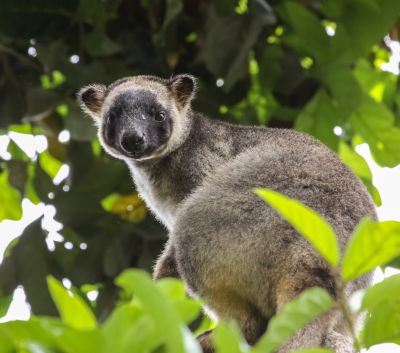
Tour details:
Pricing: from $1250 AUD (total group price for 1-4 passengers) Private Group Size : Maximum of 7 guests Pick-up and Drop Off Point : Cairns/Northern Beaches/Port Douglas Pick-up and Drop-off Time : Cairns 7:30am/Northern beaches 08:00am/Port Douglas 8:30am (location dependent), Drop off approximately 5:00pm
How you'll be making a positive impact
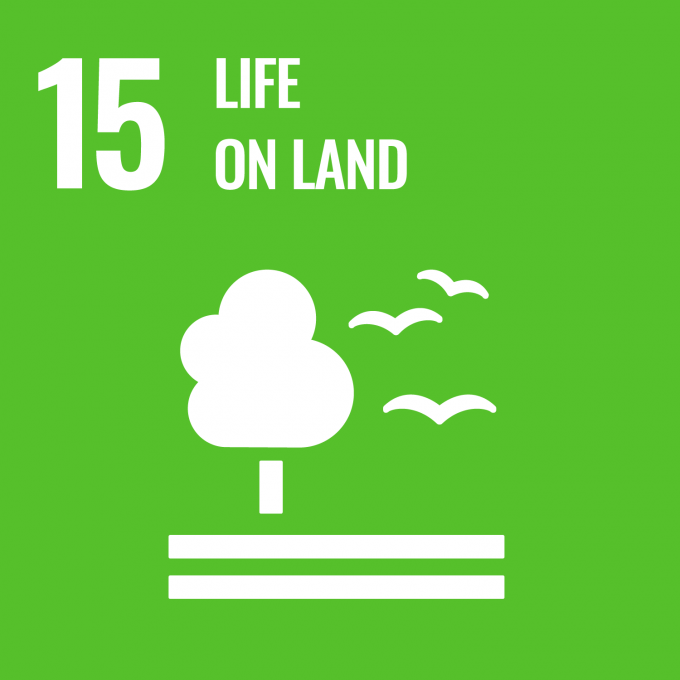
FNQ Nature Tours contributes observations of flora & fauna via iNaturalist, the world’s leading global social biodiversity network. This platform allows our team to create research-quality citizen science data that enables a more detailed picture of our national biodiversity, and assists bodies such as the CSIRO, ecologists and other decision makers to deliver better outcomes for the environment and our species.
Our guides record observations with iNaturalist Australia by using the iNaturalist app on mobile phones or desktop computers. An observation records an encounter with an individual organism at a particular time and location in Far North Queensland. We require photos to be attached to observations for them to become research grade and added to the Atlas of Living Australia.
This is where you can greatly assist us in capturing images out on tour! Although we make broader observations that we think are valuable to the local scientific community, we have identified the following species to track when we are exploring Far North Queensland by vehicle or on foot.
Key species we're looking out for include:
- Black-throated Finch
- Grey Goshawk (white morph)
- Lesser Sooty Owl
- Red-necked Crake
- Lumholtz’s Tree-Kangaroo
- Green-eyed Tree Frog
- Boyd’s Forest Dragon
- Great-billed Heron

FNQ Nature Tours have developed a number of partnerships with key environmental organisations in Far North Queensland, including FNQ Wildlife Rescue, Bush Heritage, Forever Wild, Australian Quoll Conservancy, Tolga Bat Hospital, Tree Roo Rescue and Wildlife & Raptor Care Queensland.
Forever Wild, Australian Quoll Conservancy, Tolga Bat Hospital, Tree Roo Rescue and Wildlife & Raptor Care Queensland are all supporte financially via special touring experienecs provided by FNQ Nature Tours.
Media Gallery
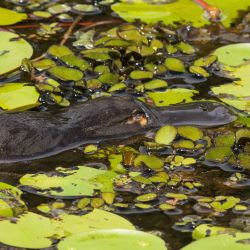
Related tours
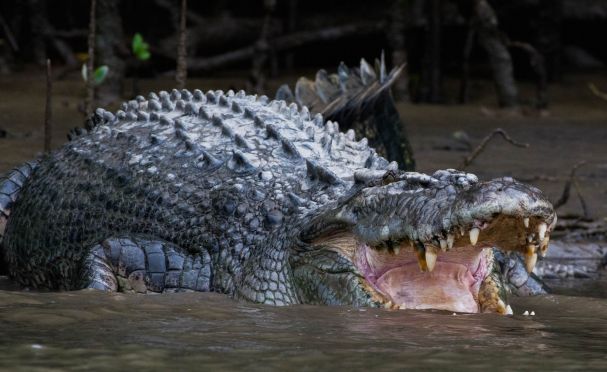
Daintree Afternoon & Nocturnal
From $400 AUD
Available months: January to December.
Read more about Daintree Afternoon & Nocturnal
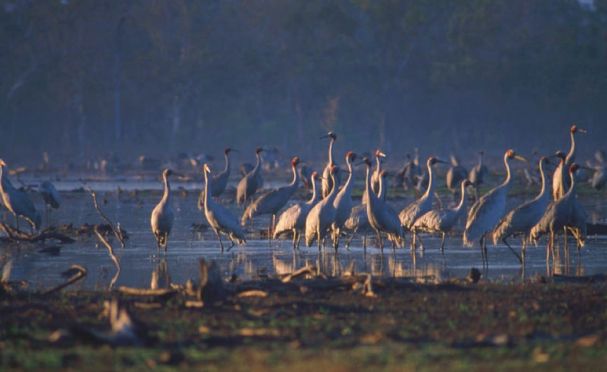
Tropical Wetlands Birdwatching
From $1,150 AUD
Read more about Tropical Wetlands Birdwatching
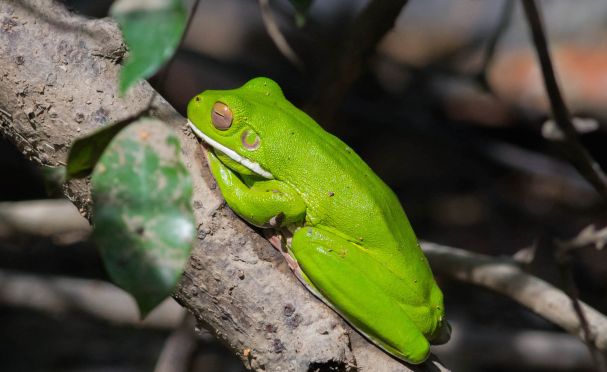
Daintree Exclusive
From $1,650 AUD
Read more about Daintree Exclusive
Join the conversation
- Facebook page
- Twitter profile
- Youtube Channel
- Instagram profile
Subscribe for our special offers
- Science & Environment
- History & Culture
- Opinion & Analysis
- Destinations
- Activity Central
- Creature Features
- Earth Heroes
- Survival Guides
- Travel with AG
- Travel Articles
- About the Australian Geographic Society
- AG Society News
- Sponsorship
- Fundraising
- Australian Geographic Society Expeditions
- Sponsorship news
- Our Country Immersive Experience
- AG Nature Photographer of the Year
- Web Stories
- Adventure Instagram
Wolfe Creek Crater
Wolfe Creek meteorite crater, in northern Western Australia – the country’s best-known impact crater – was formed 300,000 years ago. The meteorite that caused the crater would have weighed more than 50,000 tonnes and is thought to have been travelling at 15km/second.
The crater would have been a lot deeper when it was first formed, but sand dunes on the eastern side have blown in a lot of sand and filled the crater somewhat.
Discovered by Europeans in just 1947, the crater was long known by traditional owners, who called it Kandimalal.
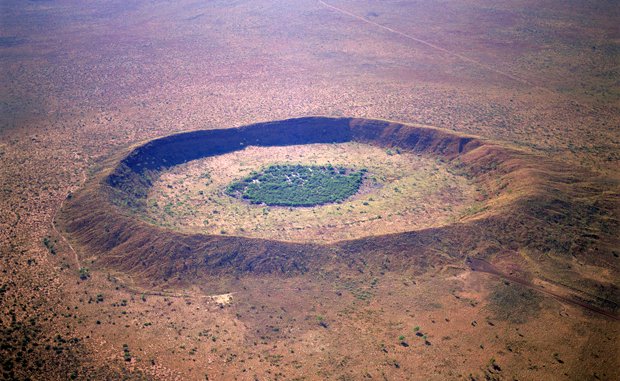
A diagram of the main features of the Wolfe Creek crater in Western Australia. It is one of the world’s 18 known craters associated with a meteorite impact. During its violent formation, much of the rocks disappeared – being pulverised, vaporised or dispersed as a dust cloud.
An impact on the scale of Wolfe Creek is predicted to occur about once every 25,000 years. Extinction-level impacts may occur about once every 50-100 million years.
Read more about meteorite craters in Australia.
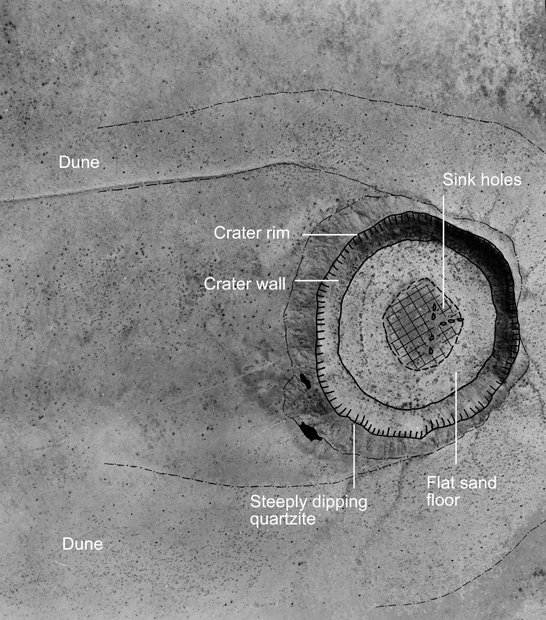
Veevers Crater
Discovered from the air during a government survey in July 1975 and named after an Australian geoscientist, the Veevers crater is located in Western Australia, between the Great Sandy and Gibson deserts. At 70m wide, it’s one of the best-preserved impact craters of its size in the world, although according to Geoscience Australia its origins remain speculative.
Read more about meteorite impact craters in Australia.
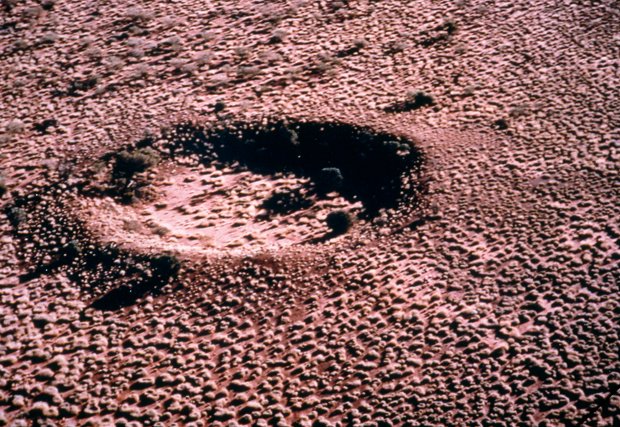
Henbury Meteorites Conservation Reserve
About 4700 years ago, a meteor weighting several tonnes hurtled to Earth at 40,000km/h before fragmenting on impact. It left 12 craters that can today be explored at Henbury, south of Alice Springs in the Northern Territory. The largest of the craters is 180m wide and 15m deep. Thousands of iron-based meteorite fragments have been found in the vicinity, validating its classification as an impact crater.
In Australia, five craters have remnant meteorite fragments around them: Boxhole (NT), Dalgarana (WA), Henbury (NT), Veevers (WA) and Wolfe Creek (WA).
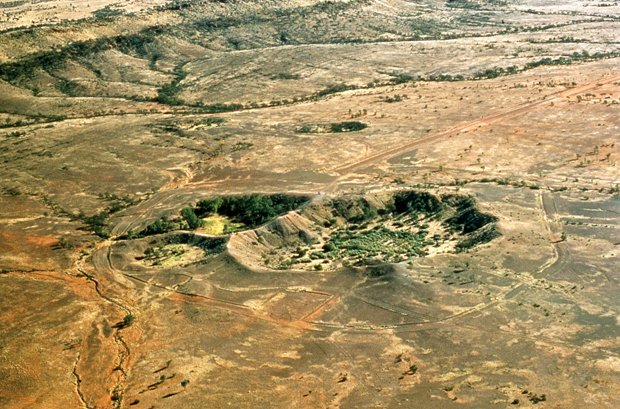
Shoemaker crater
The Shoemaker crater (formerly called the Teague Ring) is an impact crater in Western Australia, about 100km northeast of Wiluna. The 30km-wide crater could be 1.7 billion years old, and is regarded as Australia’s oldest-known impact structure.
There are 176 craters around the world that scientists consider to be meteorite ‘impact’ craters. Australia has 30 of them.
Read more about meteorite impact craters in Australia.
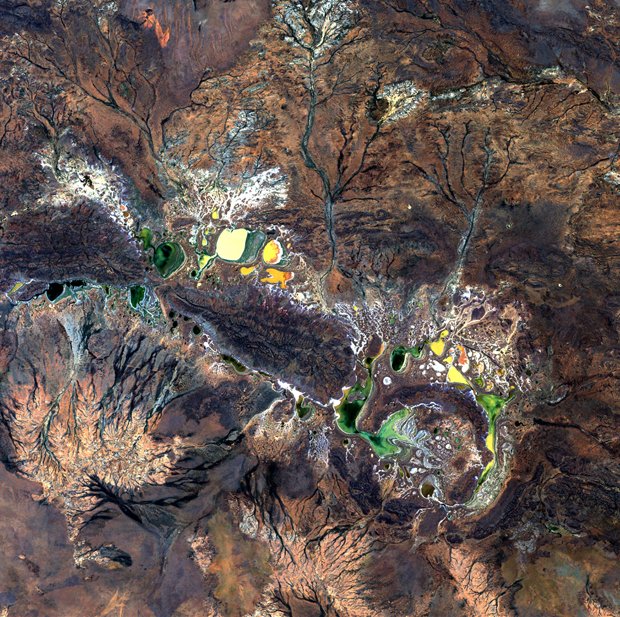
Acraman crater
This impact crater is in the Gawler Ranges in South Australia. There are thousands of circular structures on Earth, many of them formed by volcanic processes. Some of them, like the Acraman crater, are not near volcanic areas and don’t have volcanic rocks around them – ruling in the possibility of their formation by impact from objects like meteorites.
Tell-tale evidence includes: shallow, circular crater or features; certain types of minerals in the surrounding rocks being ‘shock’ affected, the presence of ‘shatter cones’; and the presence of a particular chemical signal from vaporised gases in the rocks.
The impact that caused Acraman crater is estimated to have occurred about 580 million years ago.
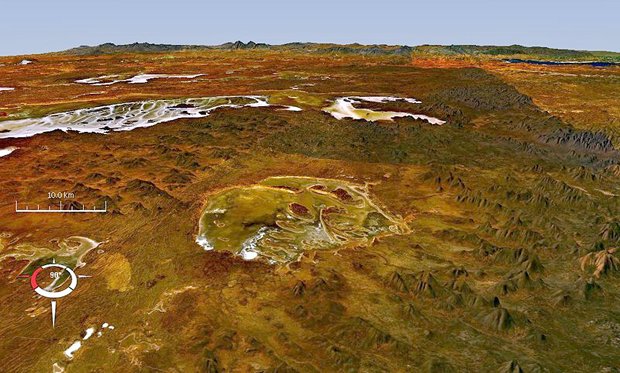
Piccaninny crater
The Piccaninny crater in Western Australia lies in the Purnululu (Bungle Bungle) National Park. The 7km-diameter crater is largely eroded so may have originally been larger. While the impact event has not been dated, the crater is thought to have formed less than 360 million years ago.
Since the Earth is almost three-quarters water, most meteorites hit the ocean. These missiles are often quite fragile, breaking up easily on impact and often tearing apart when they first hit the Earth’s atmosphere.
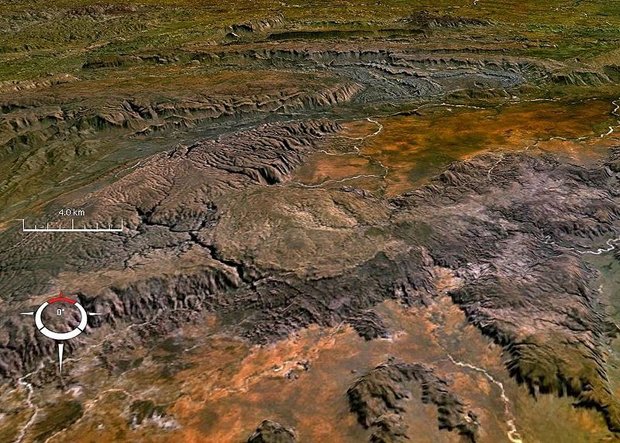
A schematic of the formation of a simple impact crater. When a massive object travelling at high speeds hits the ground, it punches a hole and pulverises and vaporises the rocks deep below the surface.
In a fraction of a second, that energy is converted to heat and a shock wave that melts the projectile and surrounding rock and blasts material out in every direction. This is why meteorites are rarely found within explosion craters.
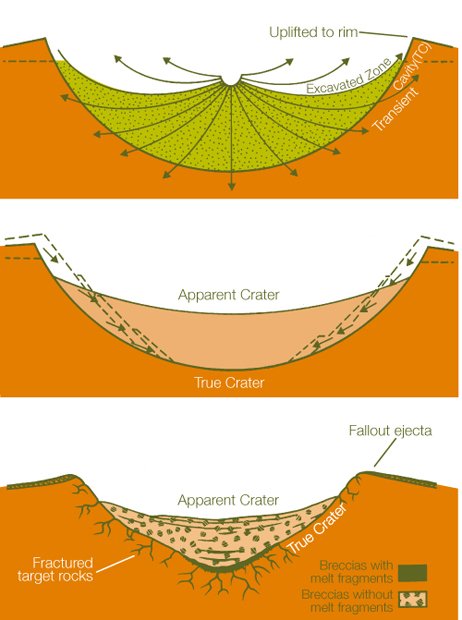
A map of craters around Australia. Of the 176 impact craters around the world, 30 are in Australia and five of those have meteorite fragments near them.
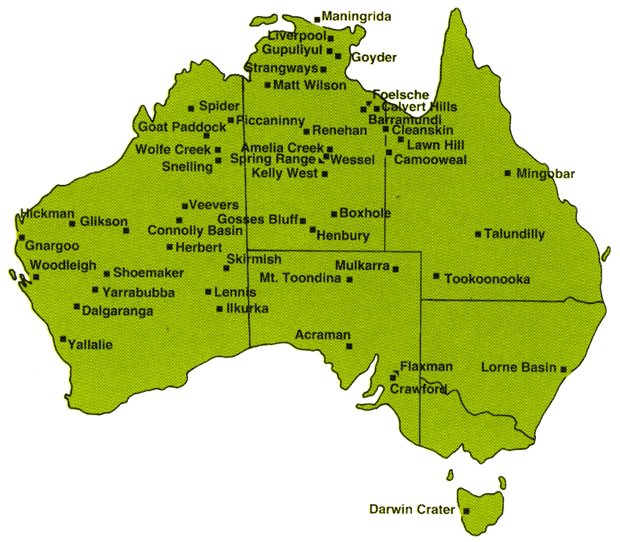
Home Topics Science & Environment Gallery: Meteorite craters in Australia

Gallery: Meteorite craters in Australia

'Interpol' database for parrots caught in illegal wildlife trade
Researchers are using forensic genomics to protect parrots from the illegal wildlife trade.

How to see the ‘devil comet’ from Australia
If you’re a fan of all things space, you’ve doubtless heard about the 'devil comet', which has been captivating keen-eyed observers in the Northern Hemisphere for the past few weeks.

‘Bunyip’ bird returns to restored Tasmanian wetlands
For the first time in more than 40 years, the distinctive booming call of the endangered Australasian bittern once again rings out across the waters of Tasmania’s Lagoon of Islands.
Watch Latest Web Stories
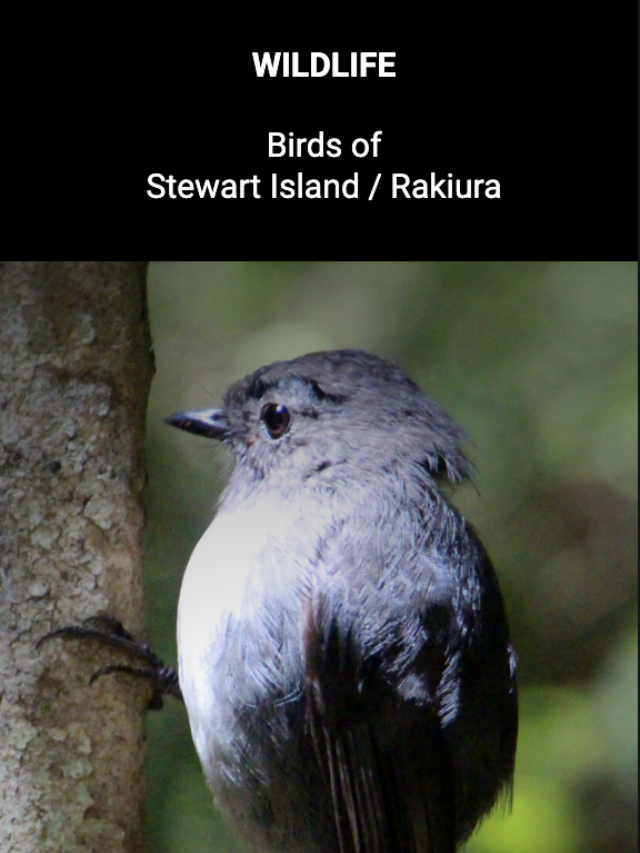
Birds of Stewart Island / Rakiura
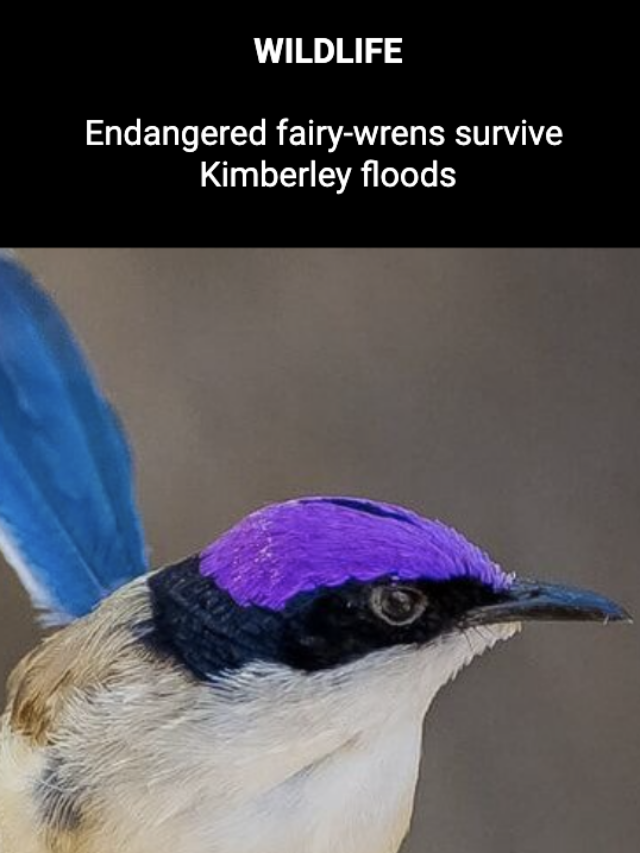
Endangered fairy-wrens survive Kimberley floods
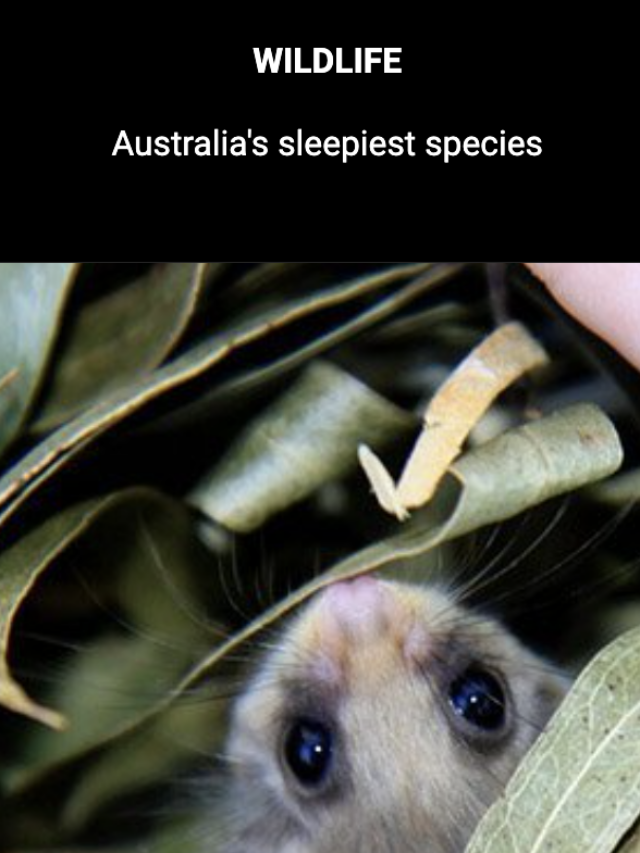
Australia’s sleepiest species

2024 Calendars & Diaries - OUT NOW
Our much loved calendars and diaries are now available for 2024. Adorn your walls with beautiful artworks year round. Order today.

In stock now: Hansa Soft Toys and Puppets
From cuddly companions to realistic native Australian wildlife, the range also includes puppets that move and feel like real animals.
Five places that mark Australia's extreme geological past
Science Five places that mark Australia's extreme geological past
Australia is often thought of as an ancient and quiescent continent — the sleeping giant in a world where landscapes dramatically change in front of our very eyes.
Earthquakes have shattered New Zealand and Italy, tsunamis have inundated Japan and Indonesia, and volcanic eruptions have blasted Iceland and Russia, to name a few.
In Australia, meanwhile, our activity seems to be limited to a steady northward drift at a rate of centimetres per year.
But Australia's past is far from sleepy.
Here are five places where evidence of our extreme history is written in stone.
Central Australia: World's biggest gravity warp
Driving along the Stuart Highway from Adelaide to Darwin can seem like an uneventful journey, with miles and miles of flat country only occasionally interrupted by low hills and dry creeks.
But hidden beneath the red earth are some of the biggest subsurface anomalies you've never seen.
Just north of the outback town of Marla, the layer underneath the Earth's crust called the mantle rises up 30 kilometres closer to the surface along an extensive fault system known as the Woodroffe Thrust-Mann fault.
This subterranean mountain is so large that it actually warps the Earth's gravity field.
The mantle is much denser than typical continental crust. So the Woodroffe Thrust-Mann Fault is visible in gravity maps as a linear streak running east-west.
Gravitational acceleration is faster in the red areas at the core of the fault zone compared to the blue areas either side.
The difference in gravity along the fault zone is so dramatic that it has been recognised as the largest continental gravity gradient anywhere in the world.
So if you were to drop a rock on your foot on the journey from Adelaide to Darwin, better to do it at a fuel stop in Marla than while sightseeing at the border of South Australia and the Northern Territory — the lower gravity at Marla means the rock will be slightly lighter so it might hurt a little less.
Lake Acraman: A crater of cataclysmic proportions
Looking down from space, Lake Acraman seems innocuous enough on the gentle slopes of the northern Eyre Peninsula in South Australia. But its circular shape hints at a truly cataclysmic origin.
This lake is actually the eroded remains of a giant meteorite impact crater that is 580 million years old and estimated to be up to 90 kilometres wide — one of the largest craters ever identified.
No surprises then that the impact energy was equivalent to more than 5 million megatons of TNT; enough to produce a global catastrophe that included seismic shocks, tsunamis and super-hurricanes.
Material ejected from the crater has been identified more than 300 kilometres east in rocks of the Flinders Ranges.
Here, features such as shatter cones, shocked quartz and pulverised rock fragments are seen within a distinctive sedimentary layer known as an ejecta horizon.
Today the crater is much flatter than when it first formed, with up to 5 kilometres of material stripped off its surface over time — yet it still remains as the unmistakeable imprint of an extraterrestrial visitor that entered with a giant bang!
Olympic Dam: Earth's super supervolcano
The Yellowstone Caldera is the largest active supervolcano on the planet. But even it is dwarfed by the remnants of a much older supervolcano found in the Gawler Ranges of South Australia.
This region contains a lava field that stretches for 500 kilometres in diameter, with individual eruptions up to 300 metres thick and a total lava volume as high as 500,000 cubic kilometres.
That's enough to fill Sydney Harbour a million times over.
What's even more remarkable is that the piping-hot lava reached temperatures above 1,000 degrees Celsius and erupted from the volcano almost instantaneously — most likely from large fissures in the crust that burst open nearly 1600 million years ago.
But perhaps the most extreme consequence of this geological phenomenon was that it also produced the world's largest hydrothermal deposit, a spectacular ore system filled with huge reserves of copper, uranium, silver and gold.
Olympic Dam contains approximately 9 billion tonnes of ore, a remarkable by-product of the hugely enriched ore-forming fluids associated with the Gawler Ranges volcanic system.
Flinders Ranges: A snowball in the tropics
Can you image the hot and humid tropics instead being blanketed by freezing ice?
Geologists have discovered that this bizarre idea was a reality some 650 million years ago, using evidence from glacial rocks of the Flinders Ranges that were deposited at sea level and close to the equator.
In fact, this evidence has been used to argue that the whole planet was once covered in ice sheets up to several kilometres thick — a scenario called Snowball Earth.
Amazingly, global glaciation was thawed by a sudden reversal to warmer temperatures about 635 million years ago.
In the Flinders Ranges, this event is marked by the sharp transition from glacial sediments to dolomite, a distinctive sedimentary rock that formed in a warm and shallow sea.
Nearby quartzite rocks contain Ediacaran fossils, the oldest soft-bodied organisms ever discovered.
The Ediacaran Period is named after the hills that contain these fossils, and is indicated by a bronze plaque known as a golden spike — the only one in the Southern Hemisphere.
Murray River: Spectacular submarine canyons
The mighty Murray River is an ancient watercourse that can seem to only live up to its name during periods of flooding, with a small and shallow mouth that is often choked with sand.
But Australia's longest river has also produced some of the deepest submarine canyons ever found.
These incredible features sit far beneath sea level near Kangaroo Island, reaching lengths of 80 kilometres and depths of over 5,000 metres — greater than twice the height of Mt Kosciusko and tall enough to easily swallow Colorado's Grand Canyon whole.
One of the largest is named Sprigg Canyon after the geologist Reg Sprigg, who discovered them with the help of the Royal Australian Navy in 1947.
The canyons were produced when the Murray River wound its course far beyond the present coastline, when sea levels were much lower during the most recent ice age and the continental shelf was dry land.
So while the true erosive power of the Murray is rarely seen, the scars of its forgotten passage to the deep ocean can still be found in a spectacular underwater world.
Dr Tom Raimondo is a geoscientist and program director for environmental and geospatial science at the University of South Australia. He is also one of RN's Top 5 under 40 scientists. Hear more about Australia's ancient past with Dr Raimondo on RN's Off Track .
- X (formerly Twitter)
- Earth Sciences
- Science and Technology
- Skip to navigation
- Skip to content
- Skip to footer

Tnorala (Gosse Bluff) Conservation Reserve
Tnorala (Gosse Bluff) Conservation Reserve is a place of great cultural significance to the Western Arrernte Aboriginal people, as well as a site of international scientific interest.
The reserve is a registered sacred site and traditional owners welcome visitors to experience Tnorala's magic, but you should respect the area and obey signs where access is not allowed.
Scientists believe that around 142.5 million years ago an object from space, believed to be a comet about 600m wide, crashed to earth, blasting a crater roughly 20km across.
Today’s land surface is about 2km lower than the original impact surface and the bluff is about 5km in diameter, reduced over time by erosion.
The remnant crater was named Gosses Range by the explorer Ernest Giles in 1872 after H Gosse, a Fellow of the Royal Society.
The Aboriginal and scientific interpretation of the Bluff are similar in that they both have a celestial origin.
This park requires visitors to the NT to have a parks pass .
Get the Tnorala (Gosse Bluff) Conservation Reserve fact sheet and map PDF (953.4 KB) .
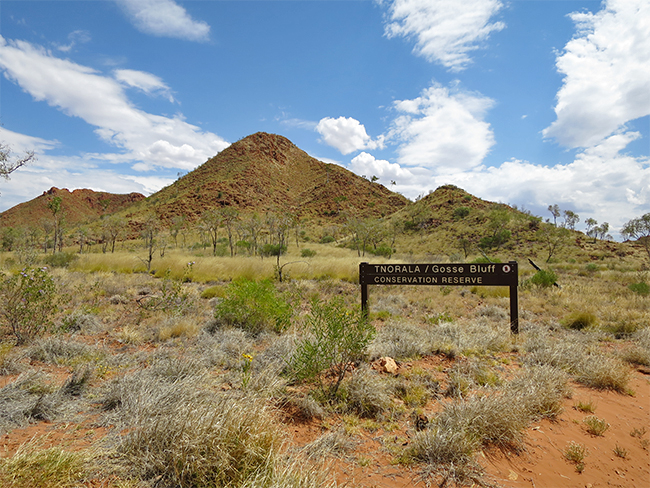
Check if this park is open
Phone: 08 8951 8250
Opening hours
All year round, but roads may close after heavy rain.
It is best to visit in the cooler months from April to September.
How to get there
The reserve is about 175km west of Alice Springs. Drive along Larapinta Drive or Namatjira Drive.
A four-wheel drive (4WD) vehicle is needed for the last 10km into the reserve. Check road conditions before you go.
What to see and do
Tnorala Conservation Reserve is a good place to go for short walks or a picnic.
Tnorala (Gosse Bluff) has all of the following facilities:
- information signs
- public toilets
- picnic areas
- walking tracks
- scenic lookout.
Please remember
When visiting the park remember all of the following:
- visitors to the NT require a parks pass
- do not walk on the crater rim
- there is no camping in the reserve
- stay on designated roads and tracks
- historic, cultural items and wildlife are protected
- fires are not permitted in the reserve
- bins are not provided, so take your rubbish with you
- pets are not permitted
- generators are not permitted
- drones are not permitted.
You can have a safe and comfortable trip to Tnorala by doing all of the following:
- observe park safety signs
- carry and drink plenty of water
- wear a hat, sunscreen, insect repellent, suitable clothing and footwear
- avoid strenuous activity during the heat of the day
- think about your health and fitness when choosing a walk.
Phone: 08 8951 8250
Last updated: 02 April 2024
Give feedback about this page .
Share this page:
- Check if a park is open: Alice Springs region
- Aboriginal knowledge: plants and animals
- Aboriginal heritage information
- Search for Northern Territory history
- Permits for commercial photos, filming in parks
- You are here:
- Tanzania Tours
- All Ngorongoro Crater Tours
- 4-Day Ngorongoro Crater Tours
Your Safari
Tour length, rates in usd $ – change currency, starting from.
- Arusha (486)
- Zanzibar (62)
- Dar es Salaam (3)
- Nairobi (0)
- Entebbe (0)
- Johannesburg (0)
- Kampala (0)
- Victoria Falls Town (0)
- Windhoek (0)
- Addis Ababa (0)
- Cape Town (0)
- Livingstone (0)
- Mombasa (1)
- Hoedspruit (0)
- Port Elizabeth (0)
- Antananarivo (0)
- Pretoria (0)
- Nelspruit (0)
- Bujumbura (0)
- Hazyview (0)
- Blantyre (0)
- Upington (0)
- Diani Beach (0)
- Lilongwe (0)
Comfort Level
- Luxury+ (4)
- Luxury (96)
- Mid-range (331)
- Budget (150)
Private or Shared Tour
- Private tour (480)
- Shared tour (101)
Safari Type
- Lodge, tented camp or hotel (439)
- Camping (142)
Operator Rating
- & up (549)
Specialized Tours
- Fly-in safaris (34)
- Family (322)
- Beach time (65)
- Honeymoon (100)
- Gorilla trekking (0)
- Photographic safaris (0)
- Mountain climbing (7)
- Walking safaris (0)
- Self-drive (0)
- Guided self-drive (0)
- Chimp trekking (0)
- Overland tours (0)
- Cycling safaris (0)
- Canoe safaris (0)
- Horseback safaris (0)
- Birding tours (0)
- Accessible safaris (0)
- Golf & Wildlife (0)
Other Tour Features
- Airport transfer is included (579)
- Itinerary can be customized (507)
Filter by Operator
Filter by accommodation, operators from.
- South Africa (4)
- Tanzania (555)
- United Kingdom (3)
- United States (15)
- Australia (2)
- Belgium (0)
- Botswana (0)
- Comoros (0)
- Denmark (0)
- Ethiopia (2)
- Eswatini (0)
- Germany (0)
- Ireland (0)
- Lesotho (0)
- Madagascar (0)
- Mauritius (0)
- Mayotte (0)
- Mozambique (0)
- Namibia (0)
- Netherlands (2)
- New Zealand (0)
- Nigeria (0)
- Portugal (1)
- Reunion (0)
- Seychelles (0)
- Singapore (0)
- Switzerland (0)
- United Arab Emirates (0)
- Zimbabwe (0)
4-Day Ngorongoro Crater Safari Tours
Everyone should visit Ngorongoro Crater at least once in their lifetime. This is the quintessential safari destination, with a combination of drama-filled landscapes brought to life by big populations of wildlife that you only find here in Africa. Ngorongoro also hosts some of northern Tanzania’s best accommodation choices. And it’s close to numerous other attractions which can be combined with a visit to Ngorongoro on a 4-day safari. These range from the well known – Serengeti, Lake Manyara or the historically significant Olduvai (Oldupai) Gorge and Museum – to the less famous – Lake Eyasi or the Crater Highlands.

4-Day Touch of Wilderness - Mid-Range
$1,690 to $2,130 pp (USD)
Tanzania: Private tour Mid-range Lodge & Tented Camp
You Visit: Arusha (Start) , Lake Manyara NP, Serengeti NP, Ngorongoro Crater, Arusha (End)
Unlimited Expeditions: The Soul of Tanzania Tour operator has an office in Tanzania
4.9 /5 – 438 Reviews

4-Day Budget Tour to Tarangire, Serengeti & Ngorongoro
$1,602 pp (USD)
Tanzania: Private tour Budget Tented Camp
You Visit: Arusha (Start) , Tarangire NP, Serengeti NP, Ngorongoro Crater, Arusha (End)
Serengeti Smile Tour operator has an office in Tanzania
5.0 /5 – 209 Reviews

4-Day Serengeti Fly in & Fly out Luxury Safari
$2,376 pp (USD)
Tanzania: Private tour Luxury Tented Camp & Tented Bush Camp
You Visit: Zanzibar (Start) , Serengeti NP, Ngorongoro Crater, Zanzibar (End)
Highneck Safaris company Tour operator has an office in Tanzania
5.0 /5 – 7 Reviews

4-Day Tarangire, Ngorongoro & Kilimanjaro Mid Range Tour
$1,210 pp (USD)
Tanzania: Private tour Mid-range Lodge & Hotel
You Visit: Arusha (Start) , Tarangire NP, Ngorongoro Crater, Materuni (Highlight) , Arusha (End)
Safari Soles Tour operator has an office in Tanzania
5.0 /5 – 246 Reviews
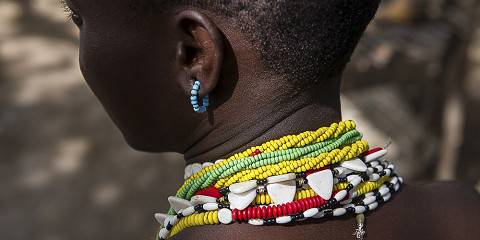
4-Day Wildlife Safari and Cultural Experience Tour
$1,236 pp (USD)
Tanzania: Private tour Mid-range Lodge
You Visit: Arusha (Start) , Tarangire NP, Lake Eyasi, Ngorongoro Crater, Lake Manyara NP, Arusha (End)
Full Package Adventures Tour operator has an office in Tanzania
5.0 /5 – 61 Reviews

4-Day Affordable Comfort Safari
$1,398 pp (USD)
You Visit: Arusha (Start) , Tarangire NP, Lake Manyara NP, Serengeti NP, Ngorongoro Crater, Arusha (End)
Professional Safaris Tour operator has an office in Tanzania
5.0 /5 – 55 Reviews

4-Day Private Midrange Safari Northern
$1,495 pp (USD)
Mountain Warriors Tours and Safaris Tour operator has an office in Tanzania
5.0 /5 – 75 Reviews
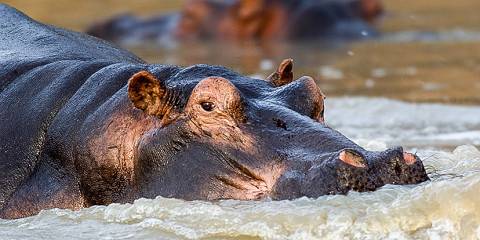
4-Day Amazing Tanzania Wildlife Safari
$1,186 pp (USD)
You Visit: Arusha (Start) , Tarangire NP, Ngorongoro Crater, Lake Manyara NP, Mto wa Mbu (Town) , Arusha (End)
Ozon Light Tours Tour operator has an office in Tanzania
5.0 /5 – 70 Reviews
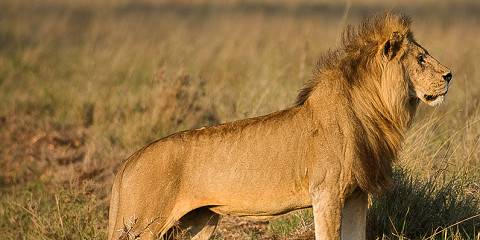
4-Day Tarangire (or Lake Manyara) & Ngorongoro Crater
$2,079 to $2,090 pp (USD)
Tanzania: Private tour Mid-range Camping & Lodge
You Visit: Arusha (Start) , Tarangire NP, Ngorongoro Crater, Arusha (End)
Benson Safaris Tanzania Tour operator has an office in Tanzania
4.9 /5 – 219 Reviews
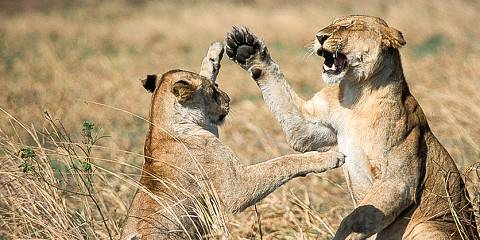
4-Day Melia Lodge Safari Tarangire Serengeti Ngorongoro
$2,508 to $3,410 pp (USD)
Tanzania: Private tour Luxury Lodge
You Visit: Zanzibar (Start) , Tarangire NP, Serengeti NP, Ngorongoro Crater, Arusha (End)
Tanzania Roadside Expeditions Tour operator has an office in Tanzania
5.0 /5 – 249 Reviews

4-Day Joint Tour to Tarangire, Serengeti and Ngorongoro
$847 pp (USD)
Tanzania: Shared tour (max 6 people per vehicle) Budget Camping & Hotel
Nkollo Tours & Safaris Tour operator has an office in Tanzania
5.0 /5 – 44 Reviews
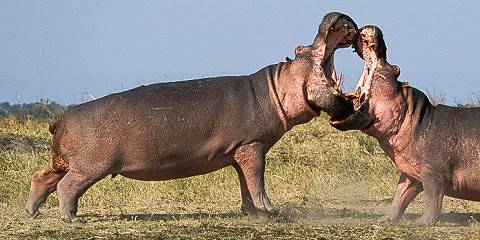
4-Day Affordable Tanzania Wildlife Safari
$1,505 pp (USD)
Serengeti Mystery Adventures Tour operator has an office in Tanzania
4.8 /5 – 22 Reviews
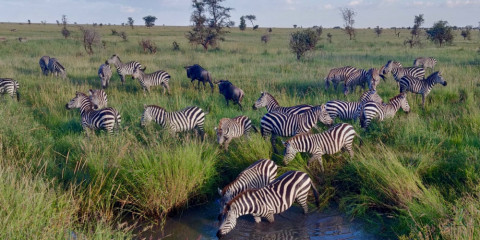
4-Day Drive & Fly Back Safari Serengeti
$1,820 pp (USD)
Tanzania: Private tour Mid-range Tented Camp
You Visit: Arusha (Start) , Tarangire NP, Ngorongoro Crater, Serengeti NP, Arusha (End)
Paradise & Wilderness Tour operator has an office in Tanzania
4.9 /5 – 130 Reviews

4-Day Private Safari Serengeti, Ngorongoro, Lake Manyara
$1,485 pp (USD)
You Visit: Arusha (Start) , Lake Manyara NP, Southern Serengeti, Central Serengeti, Ngorongoro Crater, Arusha (End)
Mashindiko Adventure Tour operator has an office in Tanzania
5.0 /5 – 22 Reviews

4-Day Fly in Safari to Serengeti, Ngorongoro & Tarangire
$2,519 pp (USD)
You Visit: Zanzibar (Start) , Serengeti NP, Ngorongoro Crater, Tarangire NP, Zanzibar (End)
Lekobe Adventures Safaris Tour operator has an office in Tanzania
5.0 /5 – 16 Reviews
4-Day Tanzania Budget Safari Trip
$1,222 pp (USD)
Tanzania: Private tour Budget Camping
You Visit: Arusha (Start) , Lake Manyara NP, Serengeti NP, Ngorongoro Crater, Tarangire NP, Arusha (End)
Nature Excursion Tour operator has an office in Tanzania
5.0 /5 – 13 Reviews

4-Day Tanzania Affordable Experience Safari
$1,815 pp (USD)
You Visit: Arusha (Start) , Materuni (Highlight) , Serengeti NP, Ngorongoro Crater, Tarangire NP, Arusha (End)
Emmy Safaris & Tours Tour operator has an office in Tanzania
5.0 /5 – 6 Reviews

4-Day Serengeti, Tarangire and Ngorongoro Crater Tour
$799 pp (USD)
Tanzania: Shared tour (max 3 people per vehicle) Budget Camping & Tented Camp
You Visit: Arusha (Start) , Tarangire NP, Serengeti NP, Central Serengeti, Ngorongoro Crater, Arusha (End)
Trust Wilderness Adventures Tour operator has an office in Tanzania

4-Day Exciting Adventure Budget and Camping Safari
$1,760 pp (USD)
Ecotone Africa Safaris Tour operator has an office in Tanzania
4.8 /5 – 5 Reviews

4-Day Awesome Serengeti, Ngorongoro, & Balloon Safari
$2,189 pp (USD)
Tanzania: Shared tour (max 6 people per vehicle) Mid-range Lodge & Tented Camp
Amshar Serengeti Adventures Tour operator has an office in Tanzania
5.0 /5 – 66 Reviews
Related Searches
- Ngorongoro Crater Safaris
- 4-Day African Safaris
- 4-Day Safaris From Dar es Salaam
- Ngorongoro and Tarangire Packages
- Ngorongoro Crater From Zanzibar
- Best Ngorongoro Crater Tours
- Ngorongoro Crater From Moshi
- Ngorongoro Camping Safaris
- Ngorongoro Crater Private Safaris
- 4-Day Serengeti Safaris
- 4-Day Nyerere Tours
- 4-Day Serengeti From Zanzibar
5 Questions About 4-Day Ngorongoro Crater Safaris

Answered by
Anthony ham.

Which parks can I visit on a 4-day Ngorongoro Crater safari?
“With 4 days to explore the region, make sure you dedicate one of these days to a full day exploring Ngorongoro Crater. A little extra time around Ngorongoro could also pay huge dividends, if you allow space in your itinerary for a visit to a Maasai village, a hike through the forests around the crater rim, or an excursion further into the Crater Highlands (to little-known Olmoti Crater, for example). With all or most of these as part of your tour, you may have time to include one other park. The two most obvious choices are the Serengeti (which is vast and deserves a lot more time) or Lake Manyara. If you do go to the Serengeti, consider flying from Ngorongoro, both for the views and to maximize your limited time in the Serengeti. Famous for its elephants and its tree-climbing lions, Lake Manyara is a compact park well-suited as an add-on to your visit to Ngorongoro.”
Which animals am I likely to see?
“Ngorongoro Crater is one of the best wildlife experiences you can have. The crater floor has prides of lions, clans of hyenas, herds of elephants and flocks of flamingos. Perhaps the biggest drawcard is the population of black rhinos: Ngorongoro is the easiest place in northern Tanzania to see these prehistoric creatures. They’re present elsewhere, including in the Serengeti, but they can be very hard to see there. And, of course, you can expect to see so much more while you’re here, including hippo, buffalo, zebra, wildebeest, cheetah and crocodile. Watch also for golden jackal and the occasional leopard. There’s also wildlife in the forests up on the crater rim, although they’re much more difficult to see. Highlights might include elephant, giraffe, lion, leopard and a range of antelope species.”
Which activities are available on a safari including the Ngorongoro Crater?
“Everyone who visits Ngorongoro goes on a guided game drive. Even if you’re on a self-drive safari, you’re required to take a guide with you down into the crater for the duration of your visit. A game drive usually begins around dawn, with a descent into the crater, where you’ll spend the best part of the day driving around, looking for animals and enjoying the view. Officially, each vehicle may only spend six hours down in the crater. Although this rule is rarely enforced, you’ll be back up on the crater rim by mid- to late afternoon. Other worthwhile activities include hiking in the forests around the crater rim, or elsewhere in the Crater Highlands, and a visit to a Maasai village (of which there are a handful up on or near the crater rim).”
How can I avoid the crowds when visiting the Ngorongoro Crater?
“Ngorongoro is busy year-round and it can be difficult to avoid the crowds. That said, the crater floor is large enough that it doesn’t always feel crowded, even during peak tourist seasons. The limited number of campsites, lodges and tented camps in the Ngorongoro area (when compared to other northern Tanzanian destinations) also keeps something of a lid on visitor numbers. Even so, there will be times when you’re down in the crater (at the popular lunch picnic spot of Ngoitoktok Springs, for example) where you’ll long for a little more serenity. High season runs from July to March, and the crater is busy for most of that time. Outside of these months, there’s a risk of rain in April and May; many Ngorongoro tracks become quagmires after rains. One of the best options is to visit in late May (and hope for fine weather) or June, when visitor numbers should be a little lower.”
How much does a 4-day Ngorongoro Crater safari cost?
“A 4-day Ngorongoro safari will usually cost at least US$150 per person per day for the cheapest budget camping safari (where you may need to help out with camp chores). At the other end of the scale, you could pay US$500 per person per day or even significantly more than that. Prices obviously increase if you factor in an air transfer to and from Ngorongoro. You also need to include a daily fee of US$50/10 per adult/child for every day you spend within the boundaries of the Ngorongoro Conservation Authority. Accommodation is a major cost variable, and so is the kind of safari you choose. If you go for a private safari, you’ll pay a lot more than you will if you decide on a group safari. On a private safari, the guide, driver and vehicle will be yours and yours alone to enjoy and pay for. On a group safari, these costs and experiences are shared. High-season prices can also push the overall cost higher, although the difference between low- and high-season prices is relatively small at Ngorongoro when compared with other northern Tanzanian destinations.”
Ngorongoro Crater Reviews

Mary is an acclaimed travel writer and author of many Lonely Planet guidebooks, including South Africa, Tanzania, East Africa and Africa.
Wildlife-filled Crater & Magnificent Vistas
Ngorongoro Crater is expensive, but the scenery, and the density and variety of the wildlife, are unparalleled. With its quintessential East African vistas awash with wildlife, and surrounding landscapes graced by the local Maasai, it is...
Full Review

Stephen is a travel writer and avid conservationist whose work appears in prestigious magazines such as Africa Geographic and Travel Africa.
The Safari of a Lifetime
Sure there will be plenty of other tourists and vehicles bumping and bouncing around inside the crater with you, but there is good reason for this: Ngorongoro is an incredible wildlife area. If you are allergic to crowds and the thought of...

We came during the long rainy season. Good thing about it is that prices are lower and the crowds are smaller. We saw many animals at close range including lions and nice and strange birds like the marabou stork. The scenery is so...
Ngorongoro was the standout location. It's like a well stocked safari park where you are guaranteed to see just about every animal except leopards and giraffe. The early morning drive down into the caldera was a highlight as in the...
The scenery here was so drastically different from the other national parks, it was absolutely breathtaking from the top and bottom of the crater. Very exciting views of black rhinos and hippos from afar. Large variety and sighting of...
We saw so many animals in that small space. I have never seen so many flamingos EVER. Wow what a site. The amount of wildebeest and zebras is mind boggling. We saw so many hyenas and lions. The only downside was that it was really crowded...

IMAGES
VIDEO
COMMENTS
Wolfe Creek Crater Road, Halls Creek, Western Australia, 6770. One of Australia's most remarkable outback landscapes, the massive Wolfe Creek Crater National Park lies on the edge of the Great Sandy Desert in the Kimberley. Wolfe Creek Crater is the second largest crater in the world, measuring 880 metres across and to a depth about 60 metres.
Wolfe Creek Crater is the second-largest crater in the world from which fragments of a meteorite have been collected, measuring 880m across and to a depth of about 60m. Sightseeing, walking, photography and nature observation are the most popular activities. Viewing the crater rim is a must - it's a 200 metre return walk to the top of the ...
Wolfe Creek Crater National Park lies approximately 150 kilometres from Halls Creek via the Tanami Road and access road, a two to three hour drive. All access within the national park is on foot. The best time to visit the park is from May to October, when the weather is fine and temperatures are moderate. Please note, the 23 km drive into the ...
Located at the approximate midpoint between Uluru and Mount Conner is the centre of what is speculated to be the largest impact crater on Earth. This crater, called the Massive Australian Precambrian/Cambrian Impact Structure, is estimated to be approximately 600km in diameter. The outermost stress field ring could be as big as 2000km in diameter.
Australia's best meteorite craters. The Wolfe Creek crater in Western Australia is the best known meteorite crater in Australia. Image credit: Dick and Pip Smith. Australia has 30 impact craters out of 176 recognised worldwide. See our gallery of some of the best. AUSTRALIA IS AN ancient land. Some of the rocks in the Pilbara region of ...
About this park. Wolfe Creek Meteorite Crater is the second largest meteorite crater in the world. It was formed by a massive meteorite smashing to earth around 300,000 years ago. Travelling at 15km a second, the huge chunk of space rock could have crossed Australia in five minutes. Mind boggling!
The crater is extraordinary; it's 875 meters (3000 feet) across. Millions of years ago, the meteorite blasted an enormous hole in the Earth. The Wolfe Creek Crater National Park is in Western Australia's arid Kimberley region. It's 150 km (93 miles) south of Halls Creek. This crater is isolated, but it's worth seeing this ancient historic ...
The Gosse Bluff crater (also called Gosses Bluff) is an impressive sight from afar. It is best seen from Tylers Pass, on Namatjira Drive. Once inside the crater, its size and shape lose their ...
Visit the Atlas of Living Australia for a list of species recorded within a 5km radius of Wolfe Creek Crater. Traditional Owners. The crater is known as "Kandimalal" in the Jaru language. It is recognised in oral traditions, personal experience, knowledge, art, and song by Jaru and other Aboriginal people.
The Wolfe Creek Crater is in Wolfe Creek Crater National Park, Western Australia. The nearest settlement of any reasonable size is Halls Creek in the Kimberley region. The drive from Halls Creek to Wolfe Creek is 145km long, and takes two to three hours depend on what sort of condition the Tanami Road is in.
556. Wolfe Creek Crater Stephan Ridgway (Creative Commons) A well-preserved crater in the Australian outback marks the earthfall of a giant meteorite that scarred the planet with its arrival ...
Henbury Meteorites Conservation Reserve is a protected area in the Northern Territory of Australia located in the locality of Ghan. [1] Henbury craters are a result of one of the few impact events that have occurred in a populated area (few other examples are Kaali crater in Estonia and 2007 Carancas impact event in Peru ).
The crater is central to the Wolfe Creek Meteorite Crater National Park. [3] The crater averages about 875 metres (2,871 ft) in diameter, 60 metres (200 ft) from rim to present crater floor. [3] It is estimated that the meteorite that formed it was about 15 metres (49 ft) in diameter and had a mass of about 14,000 tonnes. [4]
Located at the approximate midpoint between Uluru and Mount Conner is the centre of what is speculated to be the largest impact crater on Earth. This crater, called the Massive Australian Precambrian/Cambrian Impact Structure, is estimated to be approximately 600km in diameter. The outermost stress field ring could be as big as 2,000 km in ...
As one of the oldest and least geologically disturbed continents, Australia has a rich record of meteorite craters. Of 176 confirmed impacts worldwide, our country bears the pockmarks of 30 - and about 20 others await confirmation. Indeed, as you read this, another 1275 potentially hazardous asteroids (meteorite is the name of an asteroid ...
The Wolfe Creek meteorite crater is the second largest crater in the world measuring 880m across and almost circular. ... Get the practical 'know how' to adventure into Western Australia's national parks confidently, responsibly and safely. Safety. Natural area hazards ... Tours and accommodation. Conducting an event in a park. Pets in ...
After ten years of guiding nature and wildlife safaris in Northern Australia, James Boettcher established FNQ Nature Tours in 2015, with a firm belief that tourism is the key to the protection and conservation of this World Heritage area. The company offers tours across the Daintree Rainforest National Park, Atherton Tablelands, Crater Lakes and Cape Tribulation regions, designed for nature ...
The Shoemaker crater (formerly called the Teague Ring) is an impact crater in Western Australia, about 100km northeast of Wiluna. The 30km-wide crater could be 1.7 billion years old, and is regarded as Australia's oldest-known impact structure. There are 176 craters around the world that scientists consider to be meteorite 'impact' craters.
We have been Territorians since 1988 and locally based in Darwin. So if you want real genuine Australian tour advice from a local then contact us or get a outback safari tour quote from us. Or just ring us within Australia: Freecall 1800107371 or Overseas: +61 8 7999 7511 after 10am.
Lake Acraman: A crater of cataclysmic proportions Looking down from space, Lake Acraman seems innocuous enough on the gentle slopes of the northern Eyre Peninsula in South Australia.
Scientists believe that around 142.5 million years ago an object from space, believed to be a comet about 600m wide, crashed to earth, blasting a crater roughly 20km across. Today's land surface is about 2km lower than the original impact surface and the bluff is about 5km in diameter, reduced over time by erosion.
6-Day The Touch to Wilderness (Luxury Package) $3,009 to $3,039 pp (USD) Tanzania: Private tour Luxury Lodge & Hotel. You Visit: Arusha (Start), Tarangire NP, Central Serengeti, Ngorongoro Crater, Lake Manyara NP, Arusha (End) Kilimanjaro Adventure Safari Club. 5.0 /5 - 147 Reviews.
4-Day Safari - Camping Adventure (Wildbeest Migration) $2,277 pp (USD) Tanzania: Private tour Budget Camping. You Visit: Arusha (Start), Northern Serengeti NP, Central Serengeti, Ngorongoro Crater, Arusha (End) Benson Safaris Tanzania. 4.9 /5 - 219 Reviews. Best Seller.